The FATF has defined “Money Laundering” as the processing of criminal proceeds to disguise their origin in order to legitimize the illegally-gained proceeds; and “Trade Based Money Laundering” (TBML)as the process of disguising the proceeds of crime and moving value through the use of trade transactions in an attempt to legitimize their illicit origins.
In recent years, global and regional regulators have implemented stringent measures pertaining to Anti-Money Laundering & Terrorist Financing, which has made it difficult to launder money through the traditional channels. Due to the same, the Money Launderers are using more sophisticated methods like TBML especially since it is very difficult to set red flags for detection of illicit funds. This can be supported by a report from International Narcotics Control Strategy Report (INCSR) of 2003 which states that hundreds of billions of dollars are laundered annually by way of Trade-Based Money Laundering (TBML).
How does TBML works
FATF, in its report on TBML in 2006, states that the international trade system is subject to a wide range of risks and vulnerabilities that can be exploited by criminal organizations and terrorist financiers. Some of the examples for carrying out TBML includes misrepresentation of price, quantity or quality of imports or exports or through fictitious trade activities or front companies etc. It also stated that the various techniques used for executing TBML are complex in nature and can be frequently used in parallel with other money laundering techniques. Some of the basic techniques have been highlighted below:
Steps to identify Trade Based Money Laundering
As highlighted above, TBML is one of the most supplicated tools which is difficult to identify due to complexity and possible layering of the transaction, hence it is important to highlight some of the key steps for identifying TBML related transactions, including but not limited to:
TBML Process – Case in Point
Case study from APG Typology Report on Trade Based Money Laundering – 20th July 2012
ROUND TRIPPING OF FUND TRANSFERRED THROUGH HAWALA BY RECEIVING THE FUND BACK AS EXPORT EARNINGS.
Red flags
Integrated Approach for Combating TBML
For combating the risk of TBML, we propose the FIs/Banks to focus on the following three area of priorities
Policy and Control Framework
As part of our integrated approach, the first step is to develop a robust risk and control framework for identification and monitoring of TBML related issued. Banks/FIs should focus on developing/updating the following areas to strengthen its policies against TBML:
Master Data Base
The second step of our solution focuses on creating an internal Master Data Base for all the clients based on Rule/Client/Hybrid approach. This process enables the Bank/FIs to facilitate quick turnaround on review and trade execution. The importance of this approach is that it enables the Banks to maintain the transaction history of the client, which can enable them to enhance the profiling of the customers at the time of renewal and also focuses on the trend analysis of the customer’s transaction.
Governance & Escalation
The last step entails to put governance and escalation matrix in place for ensuring compliance with the industry norms, regulatory requirements and internal policy. Periodic review of the process ensures that the control framework implemented is effective. As part of the third step, the key focus areas include:
There are other controls like Monitoring Dual Usage Goods and Transaction Screening processes, which can be implemented at any stage during the review process.
Alos Read : Trade Financing GAP for Small-Mid Enterprises
Conclusion
FATF stated that “Any strategy to prevent and combat TBML needs to be based on dismantling TBMLstructures, while allowing genuine trade to occur unfettered”. In this regards, we encourage organization to take a holistic view of setting up policy & framework while aligning the same with the existing CDD/ EDD process for client onboarding/ renewal. The focus for Banks/Fis should be to enhance the robustness of its control framework and monitor the red flags on an ongoing basis. This approach also enables the bank to enhance the profiling of the customers and ensure a robust approach is adopted for combating TBML.
[Tweet “Combating #Trade Based #Money #Laundering”]

